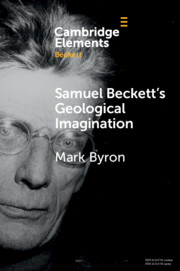Element contents
Samuel Beckett's Geological Imagination
Published online by Cambridge University Press: 18 September 2020
Summary
Information
- Type
- Element
- Information
- Series: Elements in Beckett StudiesOnline ISBN: 9781108772457Publisher: Cambridge University PressPrint publication: 08 October 2020
Bibliography
Primary Sources
Secondary Sources
Accessibility standard: Unknown
Why this information is here
This section outlines the accessibility features of this content - including support for screen readers, full keyboard navigation and high-contrast display options. This may not be relevant for you.Accessibility Information
- 15
- Cited by
